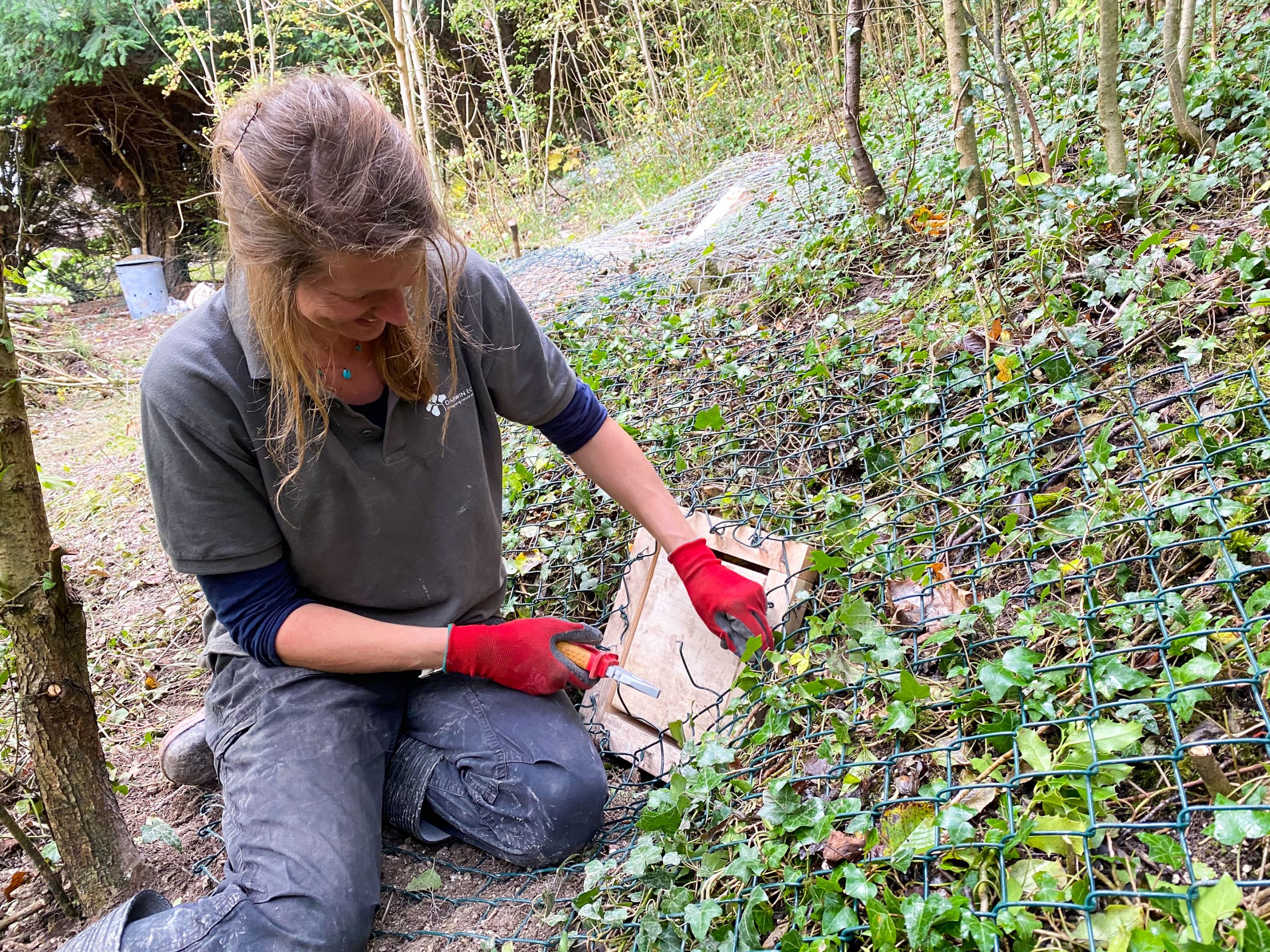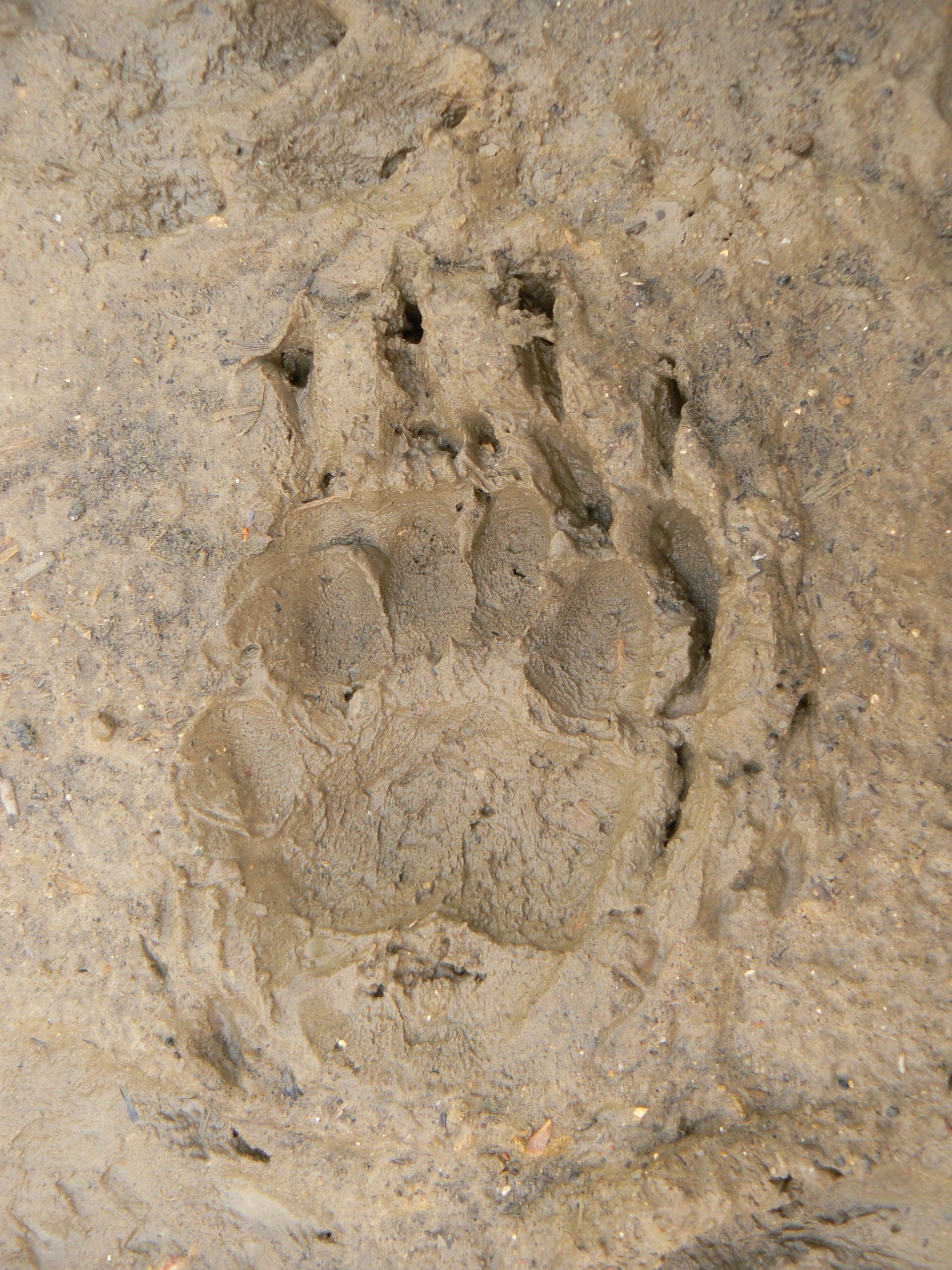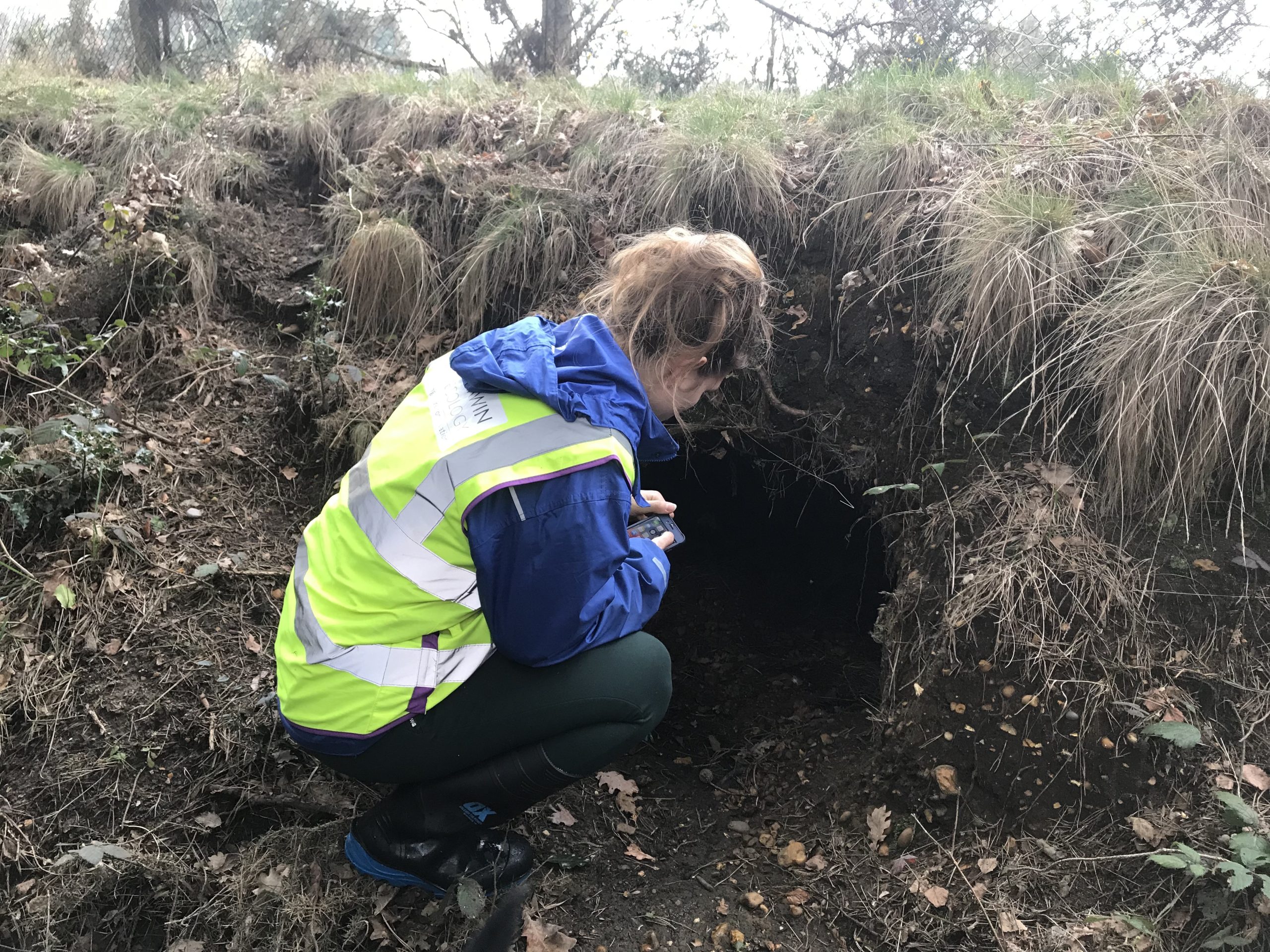In a nutshell…
It’s been a tough time for badgers.
Urbanisation and habitat destruction have made life difficult for them, and now their numbers are dwindling.
Badgers are therefore legally protected in the UK. And, importantly, so are their setts. You could get into serious trouble if your project negatively impacts them.
So if it looks like they might be in or around your site, you should get a badger survey done early in the planning process. That way, you know what you’re dealing with, and can figure out how to work around them.
We can help you with this. Just click the button above.
Want to know more about how it all works? Read on.
Why do you need a badger survey?
Badger surveying establishes whether any badger setts are on or near your site – within the Zone of Influence (ZoI) of your development – and, if so, whether or not they’re active.
Badger setts can extend up to twenty metres underground. So, if your project requires digging or breaking ground within thirty metres of a suspected badger sett, you could adversely impact the sett.
If our Preliminary Ecological Appraisal (PEA) identifies a sett on your site – or evidence of badgers, which suggests a sett is nearby – you’ll need a badger survey.
Badger surveying is possible all year round, but it’s usually better to do it over winter. The lack of vegetation can make setts easier to find.
If you think you need a badger survey, you should get in touch straight away. We’ll establish the potential constraints to your development, and find a suitable solution as early in the process as possible.
What does badger surveying involve?
Badger surveys have two stages: a site visit, followed by the monitoring of any setts present.
Here’s what’s involved:
- Site visit – We’ll conduct a thorough search of your site for all habitats with the potential for badger setts. Think hedgerows, areas of scrub, woodlands and raised banks. We’ll take photos of any setts and record their location using GPS (or similar), noting the number of entrance holes present and any other relevant evidence such as hairs, badger paths and snuffle holes.
- Monitoring: If we find a sett within your development’s ZoI, we’ll need to monitor its entrance holes to establish whether or not it’s active. If it is, we’ll classify the sett type. This stage normally takes three to four weeks, and can involve several techniques:
- Camera trapping – a wildlife trail camera set up to record any badgers or other animals entering or exiting the sett
- Sand trapping – a layer of sand spread in front of the entrance hole/s and checked daily for footprints
- Soft blocking – twigs placed over the sett entrances and checked daily to see if they’ve been moved by badgers
- Tape traps – sticky tape wrapped around sticks and left near the sett entrance to capture the hairs of any animal that enters or exits the sett
- Depending on the development’s scale, we may also conduct bait surveys to establish the extent of a badger clan’s territory and facilitate an appropriate mitigation strategy
Once we’ve finished badger surveying, we’ll compile the results in a Phase 2 report suitable for submission alongside your planning application. If active badger setts are present on your site, our report will outline the mitigation and compensation required to avoid impacts and ensure your project complies with all badger-related legislation and policies.


